One of the biggest, and most intriguing, exhibits at the Atlanta History Center is a huge 360° painting of the Civil War Battle of Atlanta which has served as powerful propaganda for both sides pictured in it. When we talk about 'fake news' today, it's clearly not a new invention.

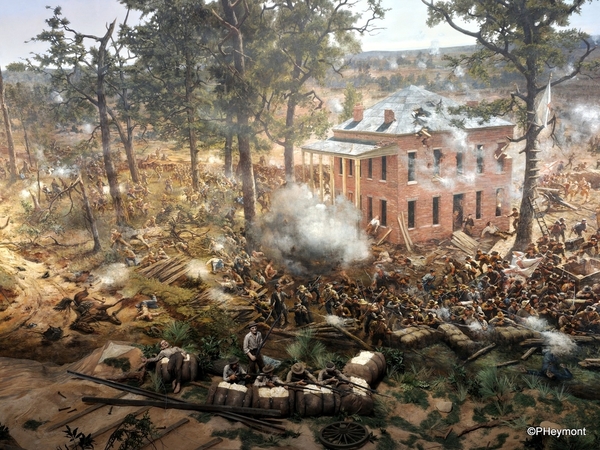
 The white house on the hilltop above was Sherman's headquarters
The white house on the hilltop above was Sherman's headquarters
The Cyclorama, one of the few remaining of a genre that was popular in the late 19th century, shows the Union victory in the battles that led to Sherman's capture and burning of the city. It was painted in Milwaukee first shown in Minneapolis in 1886 before touring a number of other cities.
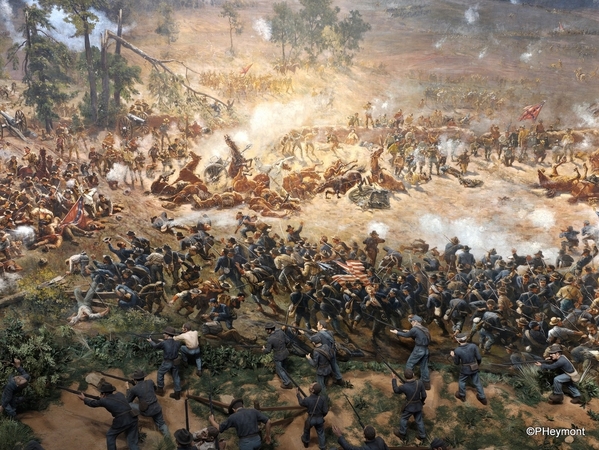
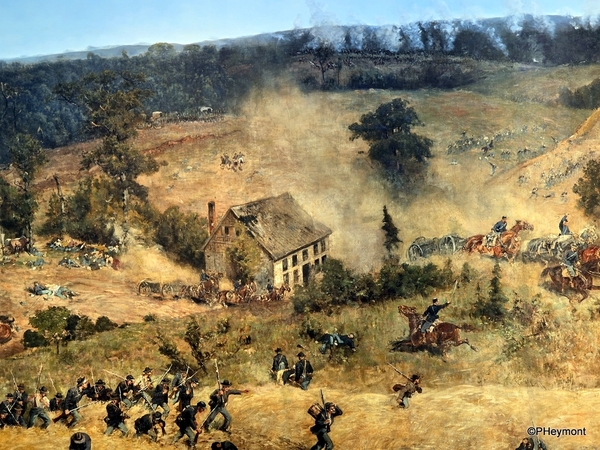
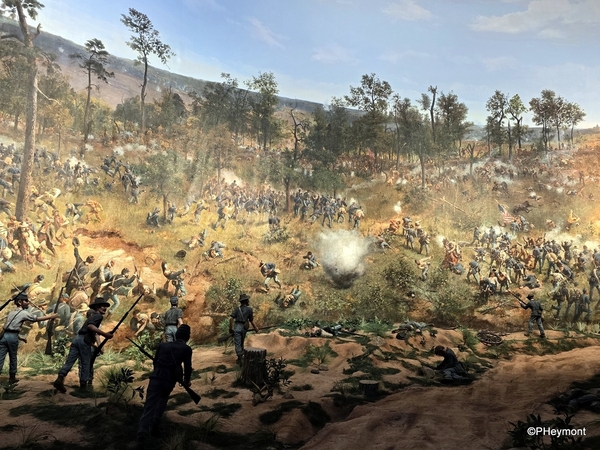
Then it was purchased by an Atlanta man, Paul Atkinson, who had his team of artists change a number of U.S. flags to Confederate ones, turn a line of rebel prisoners being led off the field into Union soldiers fleeing the battle and generally turn it into what he advertised as “the only Confederate victory ever painted.”

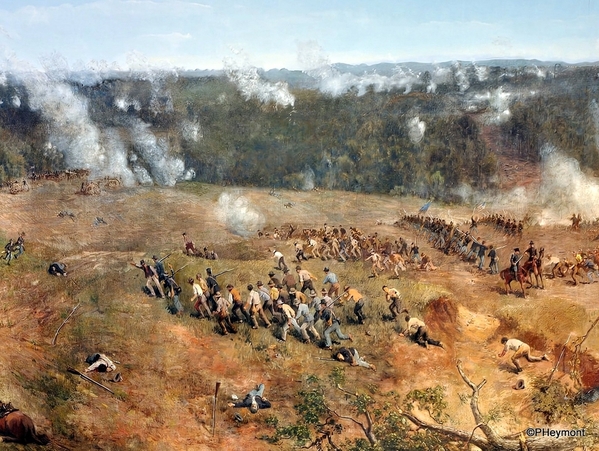 For more than 30 years, the soldiers in the upper picture were repainted in gray with a rebel flag; the group in the center of the lower picture were changed to Union troops fleeing the battle
For more than 30 years, the soldiers in the upper picture were repainted in gray with a rebel flag; the group in the center of the lower picture were changed to Union troops fleeing the battle
Not surprisingly, it proved quite popular in an era when Reconstruction had become a bad word, Jim Crow laws were spreading (not only in the South) and statues honoring 'heroes of the Lost Cause' were going up around the country, along with propaganda that depicted both sides as equally lofty and brave.
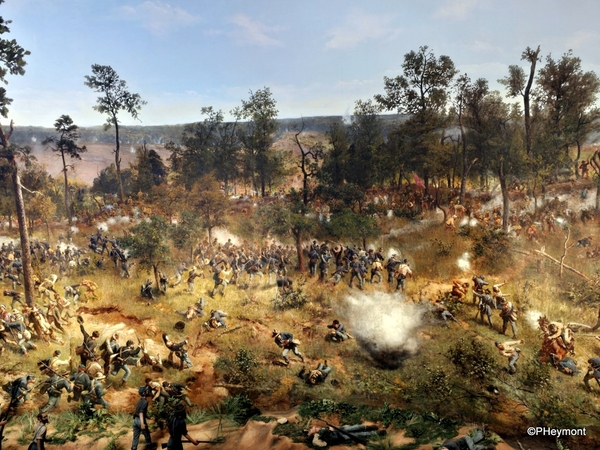
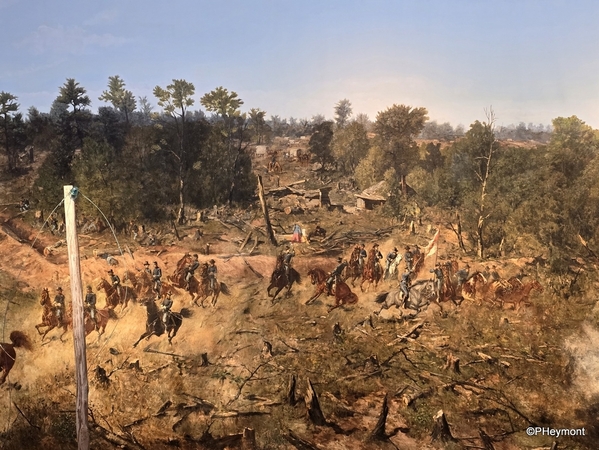

The Cyclorama soon found a permanent home in a circular building in Grant Park that is now part of Zoo Atlanta, minus a few feet of its extraordinary size (at 49 feet (15 m) high by 358 feet (109 m) long, weighing 10,000 pounds, it is the second largest painting in the world, but the building's designers miscalculated).
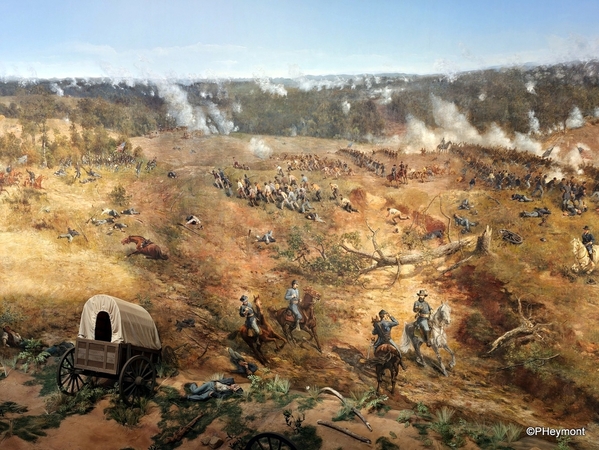
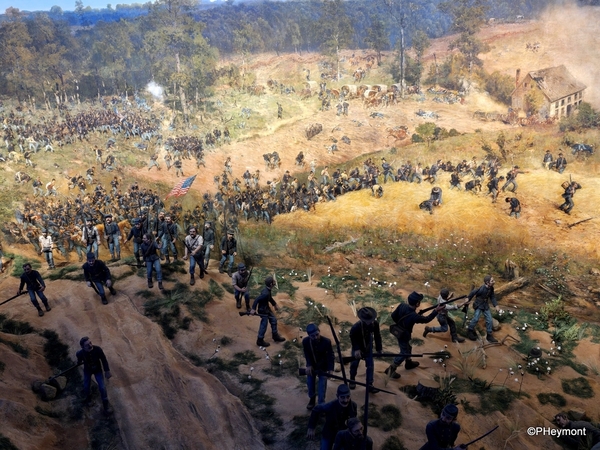
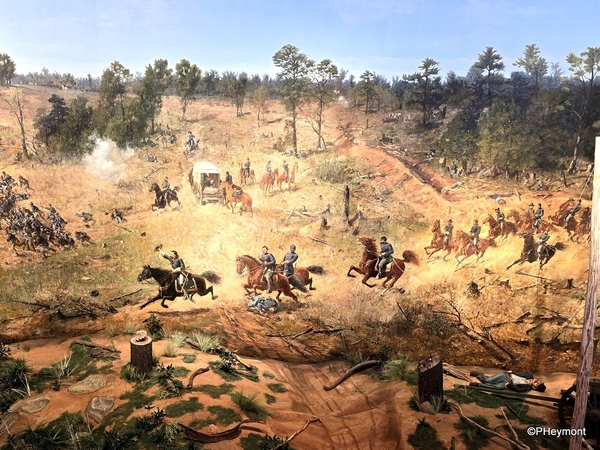
In its Grant Park building, viewing was restricted to whites until well into the 1960s, and the narration and guided tours over those years changed from time to time, but always suited their intended audience. By the 1980s, though, a more balanced view was presented, narrated by James Earl Jones. The History Center has collected recordings of several versions.

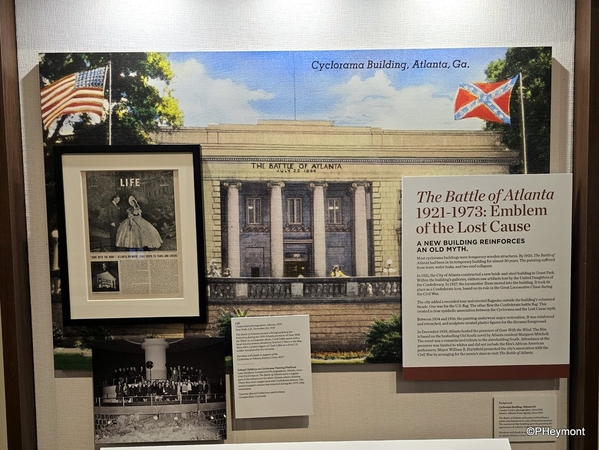
By the 1930s, the picture needed maintenance and restoration, which were carried out under direction of artist/historian Wilbur Kurtz, using funds from the federal Works Progress Administration. Kurtz not only created the three-dimensional figures in the foreground, but restored Confederates to Confederates, Union to Union and the victory to the side that actually won it. Despite that, it continued to be popular with latter-day rebel sympathizers.
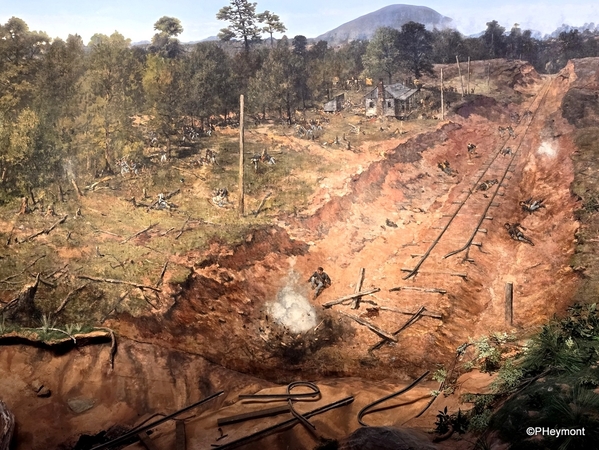
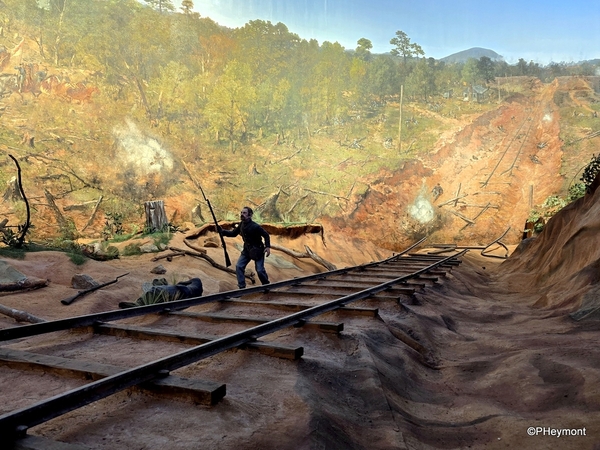 Railroads were the key to Atlanta's role as a supply center for the Confederacy. Sherman's goal was to cut the city off from the rest of the South, thereby cutting off supplies to rebel armies.
Railroads were the key to Atlanta's role as a supply center for the Confederacy. Sherman's goal was to cut the city off from the rest of the South, thereby cutting off supplies to rebel armies.
In 1939, when the romanticized pro-South movie Gone With the Wind (which Kurtz was an advisor for) opened in Atlanta, the white cast members toured the Cyclorama. Clark Gable, one of the stars, told Mayor William Hartsfield that the only thing that could make the painting even more magnificent was himself. Hartsfield had an artist paint Gable's face on the image of a dying soldier.
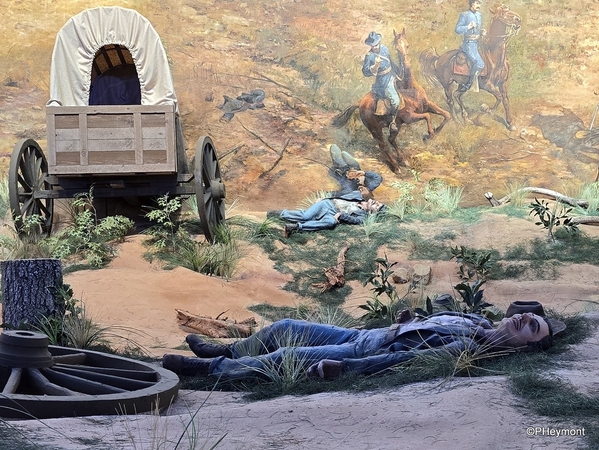

But times change and change. By the early 2000s, the Cyclorama's narrative needed serious repair, as did the Grant Park building and the painting itself. A decision was made to move it to the developing Atlanta History Center, into a new building designed for it.

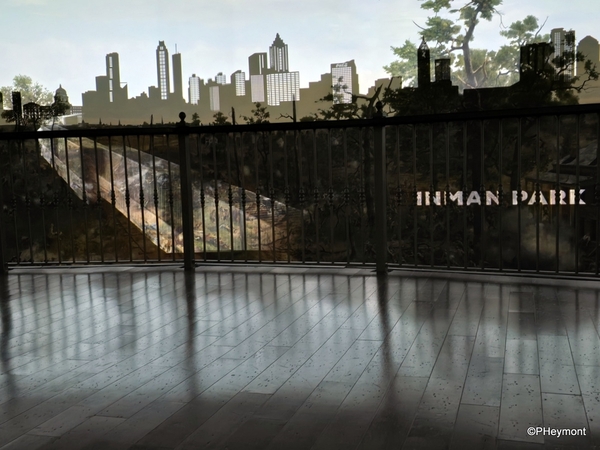
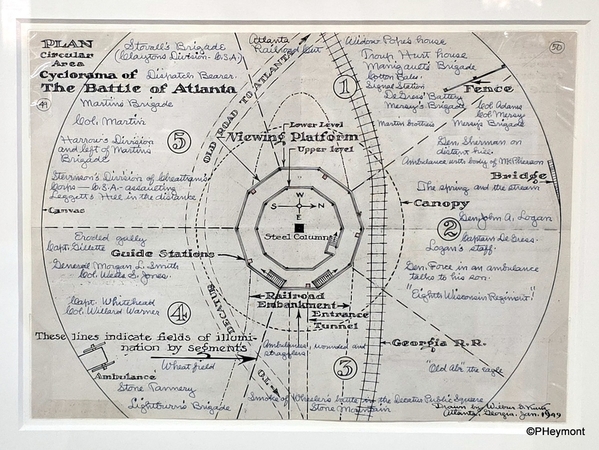 Circular viewing platform, and a scene from the movie that's projected on the painting once an hour, giving history and showing where today's Atlanta is on the scene. Wilbur Kurtz's 1939 diagram was largely followed in the new display
Circular viewing platform, and a scene from the movie that's projected on the painting once an hour, giving history and showing where today's Atlanta is on the scene. Wilbur Kurtz's 1939 diagram was largely followed in the new display
With the move came a new way to look at the immense painting: Not as an advocate for either side, but as an artifact of its own role in history. In the words of the Center, it "uses this restored work of art and entertainment, and the history of the painting itself, as a tool to talk about the ‘big picture.’ How can perceptions, memory and interpretations be shaped, or mis-shaped, by a combination of art and entertainment, myth and memory, cultural context, and current events during different eras?"

To do so, the museum frames the display with artifacts and exhibits that talk about different views about the events, and the movements that parallel it, starting with some of the beliefs and myths held by people in the period when the Cyclorama was created. Among the challenged beliefs: the South was fighting for its freedom, not to keep its slaves; that the North was motivated mainly by a desire to end slavery; and perhaps the most dangerous one, that the newly-emancipated slaves weren't 'ready' for freedom and participation in the nation's civic life.

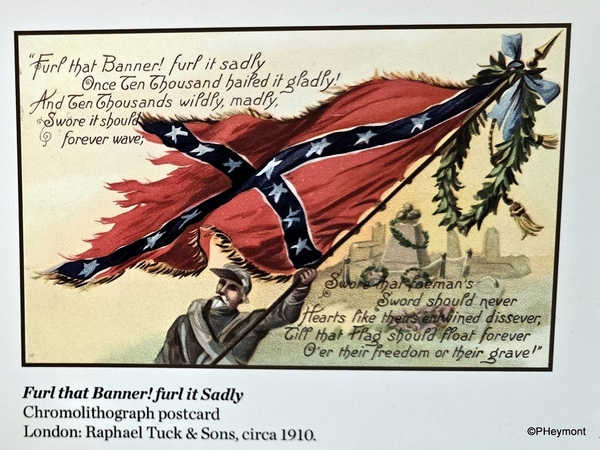
This Atlanta lamp post was damaged by an artillery shell during the battle, killing a free Black barber ironically named Solomon Luckie. In 1889 a plaque was attached to it, offering his death as proof that Union armies had targeted innocent civilians. In 1919 another plaque dedicated it to Confederate veteran Andrew West. And in 1939, at the premiere of Gone With the Wind, it was dedicated as "The Eternal Flame of the Confederacy." The postcard above shows a continuing glorification of the 'Lost Cause.'
Along with the myth of the Lost Cause came the idea of Reconciliation, that a nation re-united had resolved its issues—an idea that masked the reality of ongoing discrimination, segregation and the rise of terrorist groups such as the Ku Klux Klan, leading to Frederick Douglass's sharp reminder.
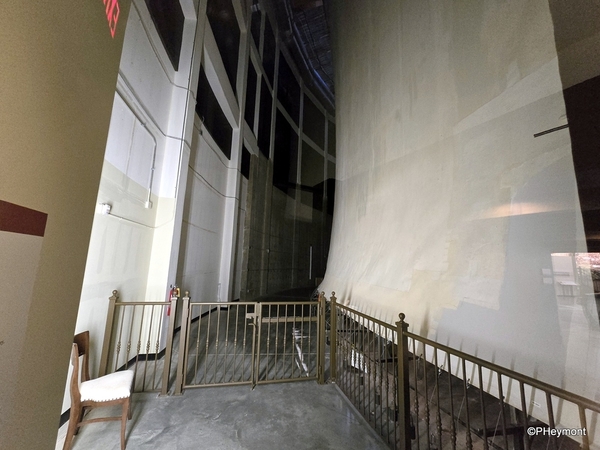
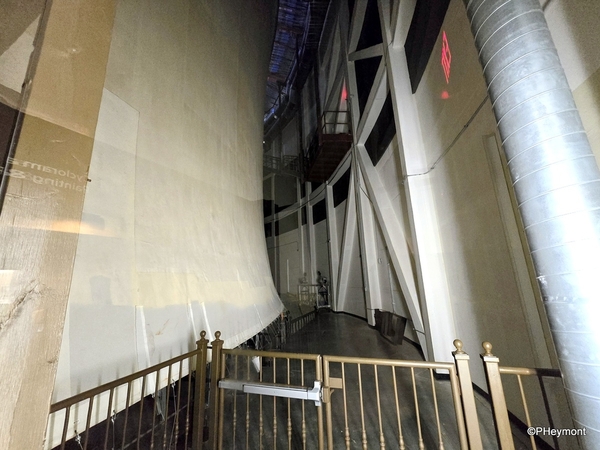 Backstage: Two views of the massive structure holding up the huge painting, whose back has now been fused to fiberglass to hold its shape
Backstage: Two views of the massive structure holding up the huge painting, whose back has now been fused to fiberglass to hold its shape
Beyond the history of the Battle of Atlanta and the battle over its meaning, there's a history to the painting itself and its genre. Once there were over a hundred cycloramas traveling the U.S.; in the era before movies, it was a popular idea; some have described it as the IMAX or virtual reality of its day. Only two remain in the U.S., this one and one at Gettysburg, described earlier this year in a TravelGumbo blog by Stephanie Kalina-Metzger.
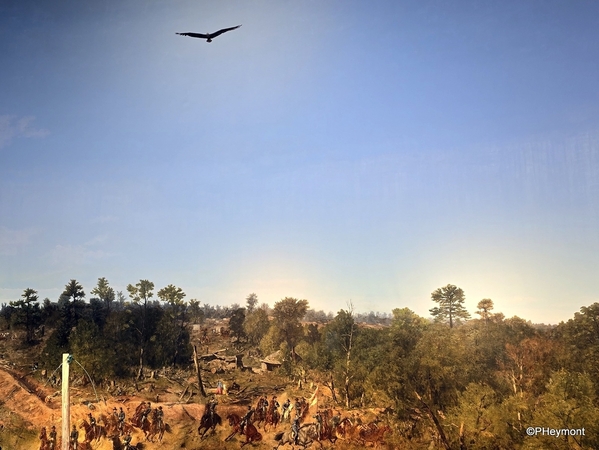 The sky, which fills 3/5 of the scene was restored with its illusion of depth, which was lost in a botched 1920s attempt to cover water stains
The sky, which fills 3/5 of the scene was restored with its illusion of depth, which was lost in a botched 1920s attempt to cover water stains
Several others exist in Europe, mostly featuring battles of various sorts, although that's not the only subject featured in the past; one popular one, now lost, depicted the 1871 Chicago Fire. One of the European ones, the Battle of Raclawice, is just a few feet wider, making it the world's largest, even after the Atlanta History Center restored the 54" that had to be cut to fit the Grant Park building.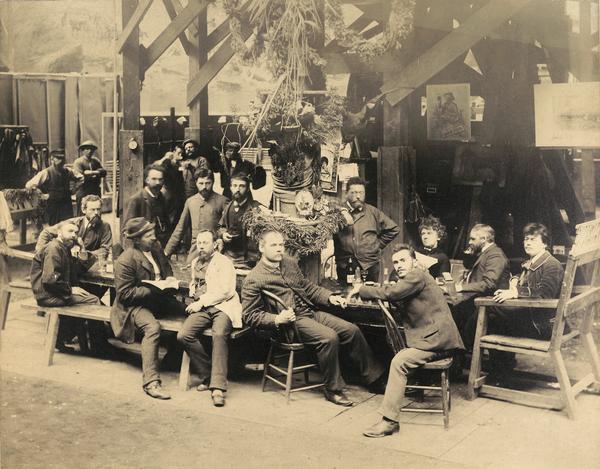
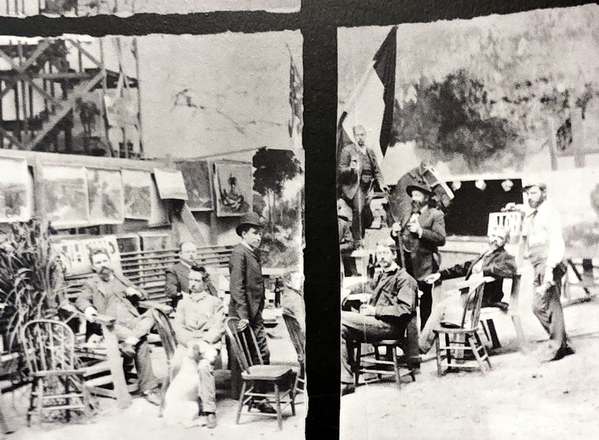
As you can imagine from the size, cycloramas were definitely a team effort, and the producer of the Atlanta cyclorama was one of the larger ones in the field, the American Panorama Company in Milwaukee, which hired teams of artists from Germany. Above, painters take a break from a Crucifixion panorama; below, relaxing with sketches and props for the Battle of Atlanta.
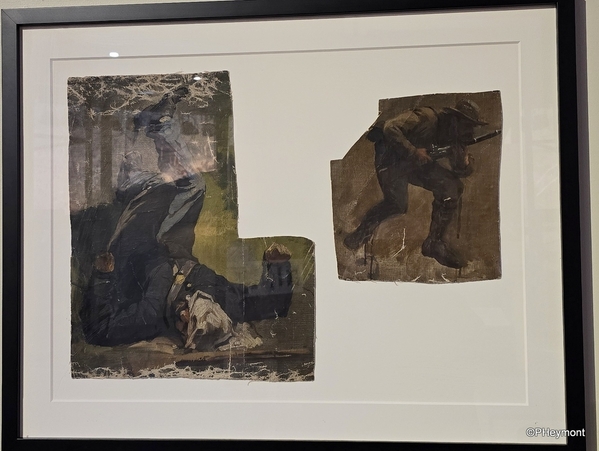
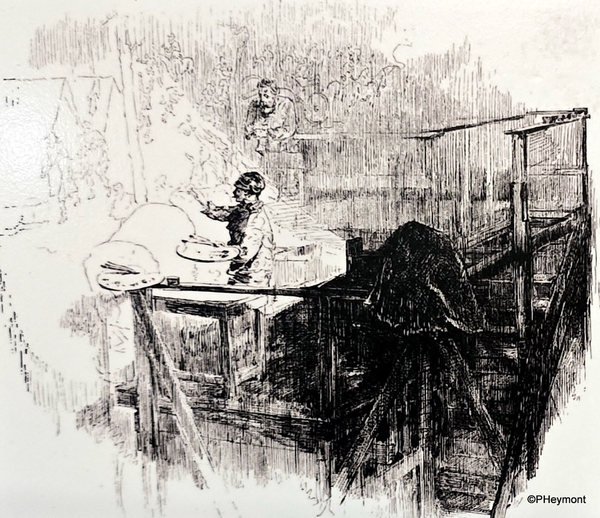
These fragmentary sketches were studies for the Battle of Chattanooga and the Battle of Atlanta. The artists used them as guides while working on the huge canvas. Priming and hanging the canvas were big steps in the process, but before that could be done, and studies enlarged onto the 'big picture,' research was the first step, followed by a smaller-scale 'dummy' painting.
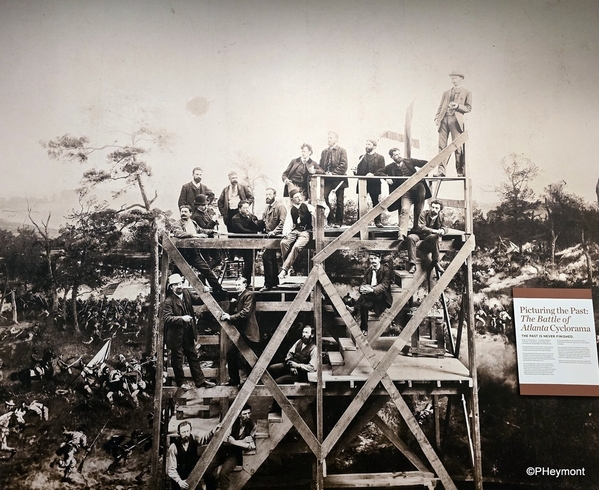
The seventeen artists on the Battle of Atlanta team traveled to Atlanta in 1885. A wooden tower was erected on the battlefield, roughly where the viewing platform would be for the completed painting, so they could see and sketch the scene. Confederate veterans and local residents guided them, pointing out where different scenes had taken place.
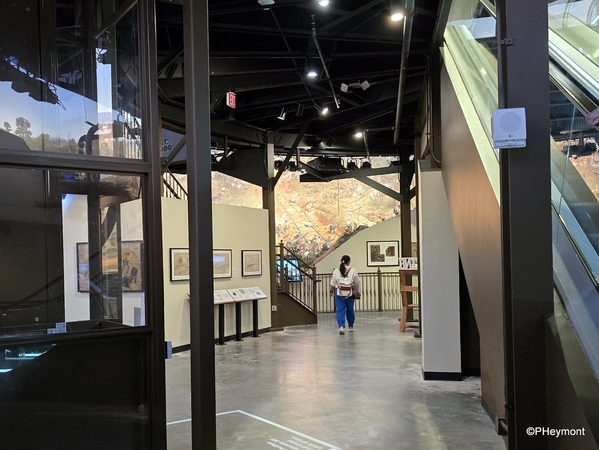
Cyclorama artists were specialists: some painted landscapes and established perspectives, others were assigned to human figures, or to buildings or animals.

Besides the artwork, cycloramas involve a great deal of engineering, carpentry and other trades to manage and maintain on such a huge scale. Above, the painting was carefully rolled up and hoisted from the Grant Park building on its way to the Atlanta History Center. Imagine that task in 1886, touring from city to city!
In one of its signs, the Atlanta History Center describes its handling and presentation of the Battle of Atlanta as changing it from "Attraction to Artifact," to moving it from a role as 'spokesperson' for a point of view to an example of how such things have been and are used to form idea, myth, belief. I think they have succeeded, and will help many understand history in a different way.
The Center also includes several historic houses and gardens on its campus, and has other Civil War exhibits as well, which also present a multi-faceted and provocative perspective, as well as extensive displays of local history and a fascinating exhibition on folk art and traditions.
And, hopefully, they remind us that while fake news isn't new, it's also possible to see through it and draw better conclusions.

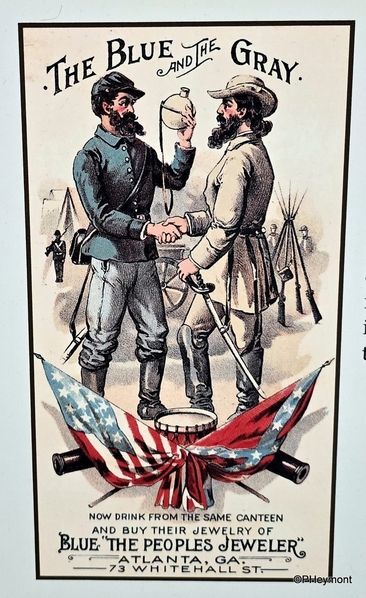

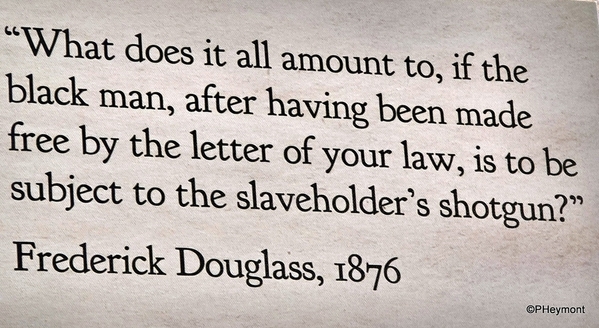
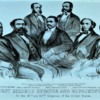







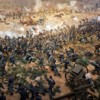







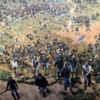





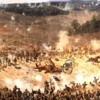

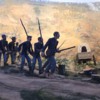








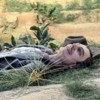






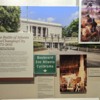




Comments (2)